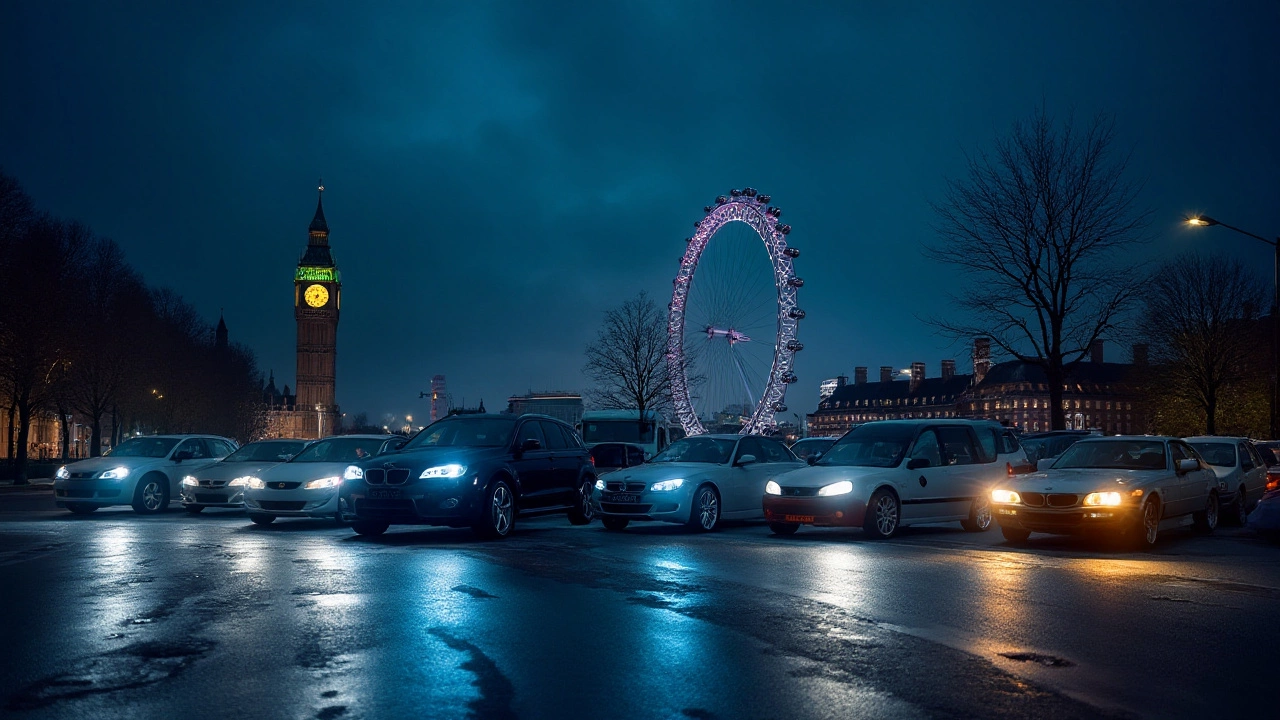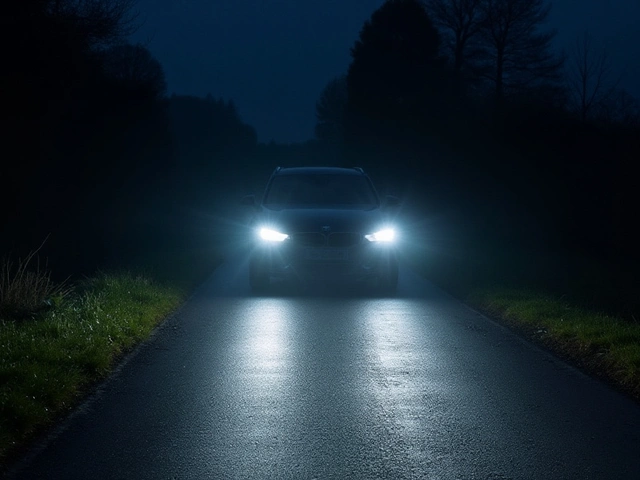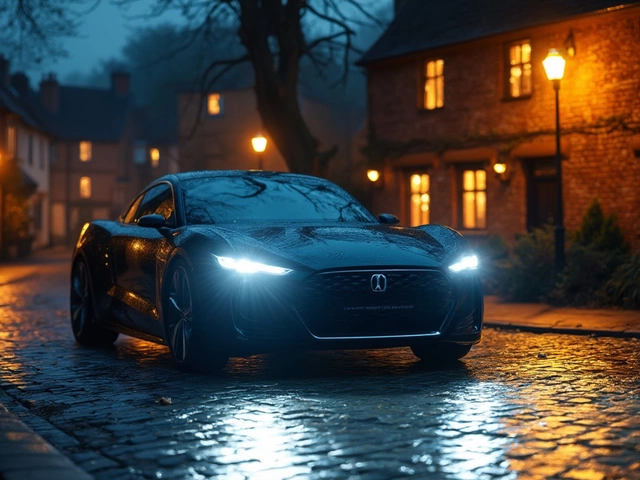When it comes to decking out your car with LED headlights, it’s not just about enjoying a cool look. There’s a whole world of regulations and safety considerations to navigate. Car owners often find themselves wondering which LED colors are not only stylish but street-legal too.
The choice of headlight color can have significant implications for both legality and visibility. Regulations are set up to ensure that all drivers have optimal visibility while minimizing glare for other road users. Understanding these guidelines can help you make the right choice for both aesthetic and practical reasons.
This article will guide you through the different aspects of LED headlight color regulations, from what's allowed on the road, to the reasons why certain colors are preferred over others. With this knowledge, you can upgrade your vehicle's lighting in a way that's perfectly aligned with both your tastes and the law.
- Introduction to LED Headlights
- Legal Regulations on Headlight Colors
- Why Color Matters in Road Safety
- Pros and Cons of Popular LED Colors
- Upgrading Your Vehicle with Legal LEDs
- Tips for Maintaining Your LED Headlights
Introduction to LED Headlights
LED headlights have revolutionized the automotive lighting industry over the past decade. They offer a blend of efficiency, durability, and design flexibility unmatched by their halogen and HID predecessors. But what exactly makes them such a transformative choice for vehicle lighting? For starters, LED, or light-emitting diode technology, is known for its incredible efficiency. Unlike traditional bulbs that waste a lot of energy as heat, LEDs convert most of it into light, which means your vehicle’s battery experiences less strain. This not only enhances the longevity of the car's electrical system but also contributes to better fuel economy.
One might wonder how LED headlights have evolved to become such a popular choice today. Originally, LEDs were used in low-light applications, such as indicator lights on electronics. However, recent advancements in technology have made them bright enough to serve as primary sources of illumination. They also allow for a wider range of designs because they can be configured in various shapes and patterns. This flexibility has sparked a trend among car manufacturers to use LEDs to create distinctive signature looks, enhancing brand identity. According to Automotive News, "LED technology has paved the way for designers to break out of the mold and create customized lighting that reflects the ethos of the entire vehicle."
In addition to energy efficiency and design versatility, LED headlights offer a longer lifespan. Traditional halogen bulbs might last around 500 to 1,000 hours, but LEDs can last upwards of 15,000 hours. This means fewer replacements and consequently, less environmental waste. Moreover, the lumen output of LED headlights is another talking point. They provide a brighter, more natural light, similar to daylight, which helps reduce driver fatigue on long night drives. The better visibility also translates to increased safety, enabling drivers to spot obstacles sooner than they might with less powerful headlamp options.
From a technological standpoint, one of the significant breakthroughs in LED headlight development was the introduction of smart controls. Many LED systems now come with adaptive features that enable them to change their intensity and direction according to driving conditions. This not only provides optimal road conditions for the driver but also minimizes glare experienced by oncoming traffic, addressing one of the major safety concerns associated with high-intensity lights. Did you know that according to a study by the Highway Loss Data Institute, vehicles equipped with adaptive LED headlights are involved in fewer nighttime accidents? The convenience and enhanced safety features are undeniable benefits that are encouraging more drivers to make the switch to LEDs.
While it’s clear why LEDs have surged in popularity, it’s also important to understand their regulatory implications when installed in vehicles. Each country might have different standards for the colors and intensity permissible on public roads. These differences underline the importance of understanding local regulations before splurging on a set of stunning new lights. Remember, the lawful use of LED headlights goes beyond personal preference—it’s intertwined with ensuring safety for yourself and others on the road.
Legal Regulations on Headlight Colors
When fitting your car with LED headlights, understanding the intricate web of headlight regulations is crucial. The laws governing legal headlight colors have been set to ensure that all drivers maintain visibility without causing undue glare to oncoming traffic. So, what colors make the cut? Generally, the accepted spectrum for most countries includes white and yellow lights. These colors are considered to provide the best visibility under a variety of driving conditions. But let's dive a little deeper into why this is the case.
The focus on prioritizing white and yellow stems from a combination of physics and human factors. On the physics front, these colors penetrate fog and rain better than their blue or green counterparts. Visibility isn't just about seeing but being seen, and white/yellow lighting is more easily distinguished by peers on the road. Human eyes are also more accustomed to distinguishing variations of light in this spectrum, making these colors less straining on the eyes during nighttime driving. This factor markedly contributes to lowering the chance of accidents associated with fatigue and strain.
"Over 70% of drivers cite confident night driving as a key factor in choosing headlight upgrades," states the Automobile Association.
While it might be tempting to go for trendy colors like blue or purple, it’s important to note that these are often banned due to their potential to imitate emergency vehicles, not to mention the greater glare they cause. In the US, the Department of Transportation sets rigorous standards for automotive lighting. The Federal Motor Vehicle Safety Standard 108 outlines that headlights must emit either white or amber light. Deviating from these can result in fines or even vehicle impoundment, a strong testament to just how seriously these laws are taken.
Compliance and Safety Standards
The European Union echoes similar sentiments with the ECE regulations that harmonize vehicle requirements across member states. Compliance here is stringent, focusing not just on color but on intensity and beam pattern as well. Car lighting must maintain a lumen output that balances visibility and safety, ensuring lights are effective but not abrasive. Got an older vehicle? The confusion often mounts when owners try to retrofit new LED setups on older models. While LED headlights offer brighter visibility and energy efficiency, they should be checked for compliance with these regional standards. Proper installation is also a must, as improperly wired headlights are a recipe for impaired visibility and possible legal ramifications.
Finally, regulations aren’t static; they evolve as technology advances and new research is conducted. New regulations on laser and matrix LED lighting are already in discussion in some legislative areas, reflecting the fast pace of innovation in car lighting technology. So, keeping up with these laws isn't just about avoiding fines; it’s about ensuring your vehicle exceeds safety expectations in a modern world. After all, being a conscientious driver is part and parcel of responsible vehicle ownership.
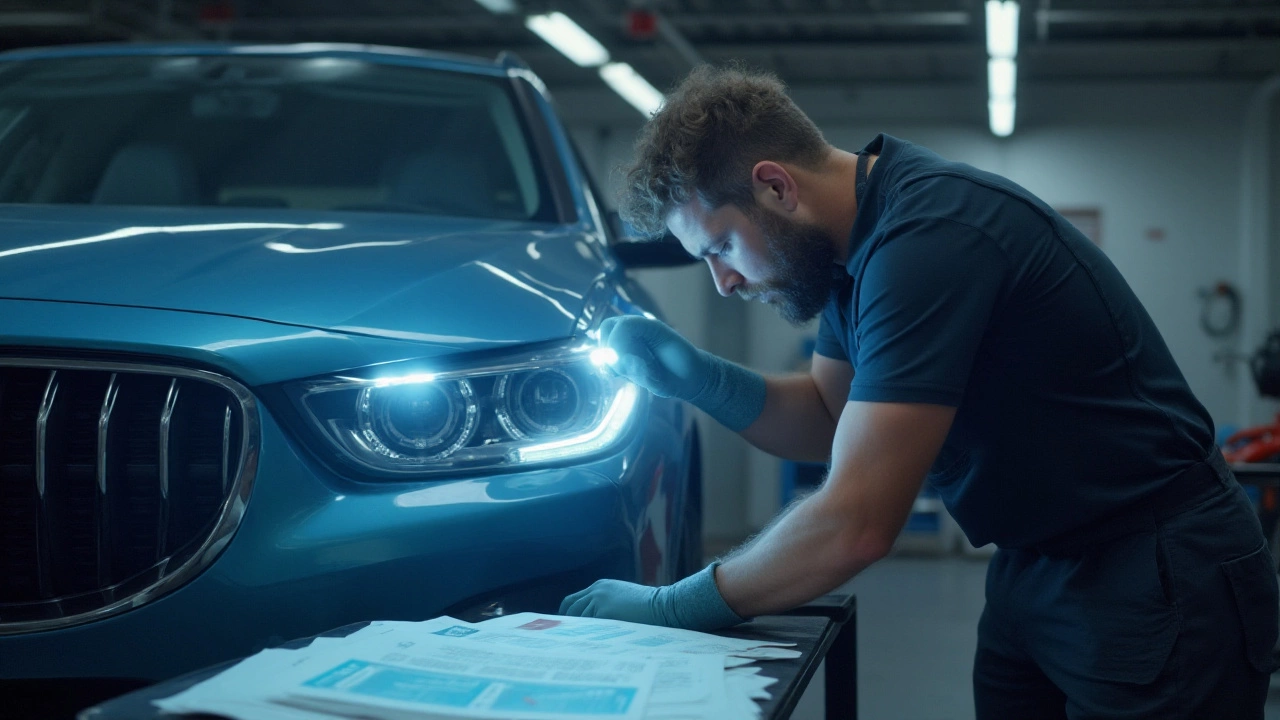
Why Color Matters in Road Safety
The color of your LED headlights isn't just a matter of aesthetics; it's a crucial element in road safety. Each headlight color has a different wavelength and intensity, affecting both your visibility as a driver and the visibility of your vehicle to others. White and blue lights, for instance, have shorter wavelengths, which translates to a brighter perception in the human eye. This brightness helps illuminate the road more efficiently and alerts other drivers to your presence from a greater distance. Interestingly, studies have shown that white and slightly bluish hues are the most effective for driver visibility. This is why many countries favor these colors for legal road use.
Weather conditions also play a role in choosing the right color. Yellow headlights, for example, penetrate fog and rain more effectively due to their longer wavelengths. These longer wavelengths reduce scatter, providing steadier visibility in adverse conditions. Despite their effectiveness, not all jurisdictions permit yellow headlights for regular use. Understanding these nuances assists in selecting car lighting that meets legal standards while optimizing safety on diverse roads and climates.
Regulatory Implications
Multiple layers of law govern which headlight colors are deemed safe and legal. The Uniform Vehicle Code (UVC) in the United States, for example, mandates that headlights must have a white or yellow color. Other countries follow similar regulations but might differ slightly in terms of acceptable color temperatures and intensities. Such laws are enacted to ensure a balance between visibility and glare reduction for oncoming traffic.
"Headlight glare is one of the most common causes of nighttime accidents," notes the National Highway Traffic Safety Administration. "By minimizing the intensity and optimizing the color spectrum, we can significantly improve driver safety."Therefore, staying informed about the local rules in your region can prevent tickets and enhance your road safety experience.
Scientific Insights
Scientifically, human eyes detect varying colors depending on light's wavelength. Interestingly, blue light, while seemingly more intense, can contribute to glare, negatively affecting other drivers. That's why the optimal choice often lands on a crisp white, which balances coverage and minimizes negative visual impacts. There have been discussions among scientists and automotive engineers regarding blue-rich light exposure and its effect on circadian rhythms, suggesting potential sleep disruptions for drivers. As our understanding of these interactions deepens, such phenomena may lead to evolving legislation concerning legal headlight colors.
When upgrading to new headlights, consider many factors influencing safety and legality. With technological advancements, options are expanding rapidly. Employing the right knowledge and understanding of both the technological and legal aspects of headlight regulations can significantly impact your driving experience. Make well-informed choices that benefit you and others sharing the road.
Pros and Cons of Popular LED Colors
Choosing the perfect LED headlights for your car is quite an adventure. It’s not just about making a style statement; it’s about understanding the functionalities and legalities associated with each color. Let's start with white LEDs, which are not only legal in most jurisdictions but also provide fantastic visibility. White is a popular choice because it mimics natural daylight, helping drivers better distinguish obstacles on the road. The downside, though, is the glare. Some drivers find that bright white lights can be blinding, especially when faced with oncoming traffic during nighttime drives. Despite this, many manufacturers design white LEDs with anti-glare technology to help alleviate these concerns. So, when thinking of upgrading your headlights to white LEDs, it's crucial to weigh the benefits against these potential setbacks.
Then there are blue LEDs. Many car enthusiasts love blue LEDs for their stylish and futuristic look. However, blue lights are a tricky choice. They can sometimes be confused with law enforcement flashers, posing a risk of being mistaken for a police vehicle. In many areas, blue lights for non-emergency vehicles are illegal, so check your local regulations before opting for these. That said, blue LEDs can enhance contrast on reflective signs and lane markings, which might be beneficial in specific driving conditions. Still, it's essential to balance the risk of legal issues with these benefits.
Red LEDs create a fierce appearance and are used mostly for taillights. They ensure that your vehicle is visible from a distance, making them effective during foggy or poor weather conditions. However, using red for headlights is nearly always illegal because it can be perceived as moving away from an emergency vehicle. The red light also impacts depth perception and doesn't provide as much contrast as white, making them less effective as headlights. Although red LEDs offer a striking look, it’s critical to use them in the correct context.
Yellow or amber LEDs are another traditional spotlight choice. Besides being highly attractive in specific design contexts, yellow lights are known for reducing glare in foggy, rainy, or snowy conditions. They work well by cutting through inclement weather, making them practical in adverse environments. The drawback, however, is their lower intensity. Yellow lights aren’t as bright as white and might not illuminate long distances effectively. However, they're legal in many areas and offer the bonus of enhanced roadway penetration under particular conditions.
Green LEDs, while visually appealing and rare, hardly make the list of legal headlights within the realm of allowed road colors. They conjure a sense of innovation and can be an excellent choice for off-road or show vehicles. However, like blue, they have limits within strict roadway laws. It's essential to confirm legality before installing them for road use, keeping in mind how unique setups can afford an edge off-road or in aesthetic purposes but might limit practicality elsewhere.
A noted automotive lighting specialist mentions, "While selecting LED colors, it’s vital to strike a balance between personal preference, functionality, and legal compliance."
Ultimately, the key to selecting the best LED headlights lies not only in color preference but also in understanding the legal context and lighting needs. Each color brings distinctive advantages and challenges, and finding the right equilibrium ensures safety and style on the road.
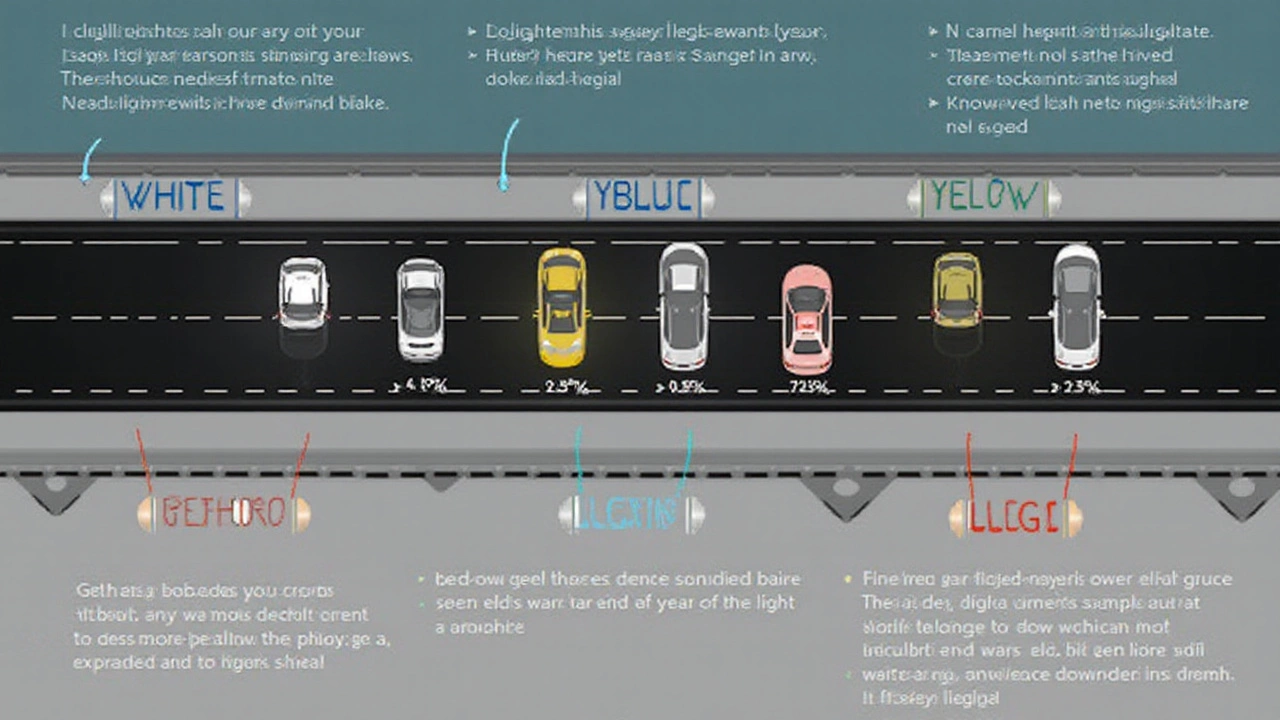
Upgrading Your Vehicle with Legal LEDs
Stepping into the realm of LED headlights can seem daunting with the myriad of options available, but it’s a worthwhile venture if you're looking to enhance both the aesthetic and functional aspects of your vehicle. The first thing to consider is understanding the difference between the standard halogen bulbs most cars come stock with and the more advanced LED options. LED headlights not only last longer but are also far more energy-efficient, which means less strain on your car’s electrical system over time. Beyond durability and efficiency, LEDs emit light in specific wavelengths, providing a brighter and clearer vision down the road, enhancing safety for nighttime driving.
When you're ready to make the leap to LEDs, it’s vital to ensure that the color temperature you select aligns with legal headlight colors. Most jurisdictions recommend a color temperature between 4300K and 6000K, which emit a natural white light that is less likely to dazzle oncoming traffic. A choice within this range provides a crisp contrast with the dark roadway, improving reaction times and reducing eye strain.
Another critical factor is installation. While many car owners might fancy themselves quite handy, LED headlight installation can be intricate due to the electronics involved. Some aftermarket kits offer plug-and-play simplicity, yet others might require more extensive rewiring. Incorrect installation not only risks legal hassles for non-compliance with local regulations but can also lead to poor lighting performance or even damage to the car’s wiring system. Consulting a professional or a detailed guide specific to your vehicle model is a sound approach.
When selecting LED headlights, the beam pattern is just as crucial as the color. A focused beam pattern ensures the light is directed towards the road instead of into the eyes of oncoming drivers. Many LED kits come with adjustable beam patterns to cater to different driving environments. These adjustments can be pivotal when transitioning between urban and rural settings.
If you’re still on the fence about the benefits of LEDs, consider the low long-term costs. While the initial price might be steeper than halogens, their extended lifespan means replacement costs diminish significantly over the years. That said, it’s always prudent to check warranty details before purchasing. Some brands offer better guarantees, providing peace of mind.
Should you wish to stay up-to-date with trends and legal stipulations, joining automotive forums or consulting with professionals regularly can offer insights and updates. A quote from an expert in the field states,
"Understanding the legal landscape and technological advances in vehicle lighting helps drivers make informed decisions—ensuring they drive safely and stylishly while indeed circumventing potential legal issues," noted John Richardson, an automotive lighting consultant.Becoming part of the community around car lighting not only enriches your knowledge but also aids in making smarter purchase choices, ensuring you stay on the right side of the law.
Tips for Maintaining Your LED Headlights
LED headlights have become a staple in the world of car lighting, not only for their aesthetic appeal but also for their efficiency and longevity. However, to ensure your LED headlights continue to perform at their best, it's crucial to follow some regular maintenance tips. One of the most basic yet vital practices is keeping the headlights clean. Dust, dirt, and grime can accumulate over the lens, diminishing the light output and reducing visibility. A simple cleaning with mild soap and water using a soft cloth can help maintain their clarity. Ensuring the lens is buffed dry afterward will prevent water spots that can affect light diffusion.
It's also important to regularly inspect the alignment of your headlights. Misaligned lights can compromise your ability to see and be seen, which is essential for safe driving. You might not notice the slight shifts over time, which can occur from everyday jolts or bumps on uneven roads. Correctly aligned lights focus the beam properly on the road and will not blind other drivers. You can check the alignment by parking your vehicle on level ground facing a wall, turning on the lights, and observing the beam pattern to see if they’re even and facing straight ahead.
Temperature control is another factor in the maintenance of your LED headlights. LEDs are designed to run cooler than other types of bulbs, but they still generate heat as a byproduct. Proper ventilation around the lighting fixture is necessary to disperse this heat. If your headlights are enclosed, make sure the housing is clean and allows for adequate airflow. In some cases, a small fan may be integrated into the headlight assembly to help with cooling, and you should ensure that it’s functioning correctly.
If you're noticing any flickering or dimming of your LED headlights over time, this might be a sign of electrical issues. Check the wiring connections to make sure everything is secure. Loose connections can lead to inconsistent power delivery, affecting the performance of the lights. It’s also wise to periodically review the vehicle's battery and electrical systems, as fluctuating power can negatively impact LED headlights. Additionally, consider inspecting the alternator as its health can affect lighting output.
Avoid using abrasive chemicals or harsh cleaners on the headlight lenses, as this can degrade the material over time, leading to dull or foggy lights. There are specialized headlight restoration kits available that can be useful if your lights do begin to fog up, offering a way to polish them back to a clear view.
"Proper maintenance of LED headlights not only extends their lifespan but also maximizes road safety," says automotive lighting expert, Dr. Jaime Curtis.
Lastly, if you live in an area subject to extreme weather conditions, consider using protective films or covers for your headlights. This extra layer can help prevent scratches and UV damage, which might otherwise lead to premature aging and yellowing. Maintenance doesn't have to be an arduous task; just a little attention now and then ensures your headlights remain in top condition, delivering the optimal performance you expect from modern LED technology.

